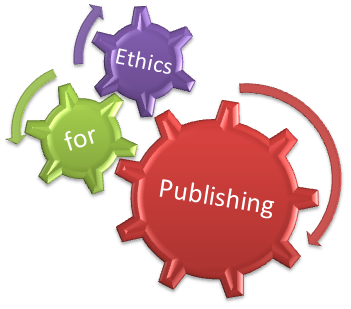Failure Analysis Methodology in Industrial Control Valves Using Quality Function
(*) Corresponding author
DOI: https://doi.org/10.15866/ireaco.v13i6.19331
Abstract
Quality control methodologies and improvement methods have been applied to the process management in order to develop a set of fault diagnosis practices during the industrial operation of mechanical components in production lines. These practices are based on the reliability concept, which defines the failure probability due to the building or design processes and maintenance activities. In this sense, a quality methodology may be considered a powerful tool employed to determine the main causes of the recurring failure events associated with the downtime cost and the material losses during the industrial production. A quality function development may be conformed by four main phases: scheme design, components definition, engineering and quality control, and manufacturing work order. Taking into account the above, this paper proposes a quality function deployment method in order to define the appropriate control parameters, which define the needs of the specific production processes related to the functionality of the mechanical devices or the minimal requirements where inspection, test specifications, and failure diagnosis are developed. In this sense, this paper purposes a quality function development methodology in order to analyze the failure analysis of the pressure–control valve implemented in a hydraulic system to verify the possible causes of non-conformity and to define a set of alternatives that improve the production process. This decision-making problem has been based on two steps: strategic and operational terms, where each point has been resolved to define a successful development of this quality control methodology. The qualitative assessment of this particular study identifies a containment loss of the pressure-control valve used to maintain the reactor oil level in the hydraulic system.
Copyright © 2020 Praise Worthy Prize - All rights reserved.
Keywords
References
Bukhtoyarov, V., Tynchenko, V., Petrovskiy, E., Tynchenko, V., Zhukov, V., Improvement of the Methodology for Determining Reliability Indicators of Oil and Gas Equipment, (2018) International Review on Modelling and Simulations (IREMOS), 11 (1), pp. 37-50.
https://doi.org/10.15866/iremos.v11i1.13994
Rojas, D., Ramos Sandoval, O., Amaya, D., Control of a Furnace and a Heat Exchanger Used in Oil Refining Industry by Using Virtual Environments, (2018) International Review on Modelling and Simulations (IREMOS), 11 (5), pp. 288-296.
https://doi.org/10.15866/iremos.v11i5.15761
M. M. Pandey, Evaluating the strategic design parameters of airports in Thailand to meet service expectations of Low-Cost Airlines using the Fuzzy-based QFD method, Journal of Air Transport Management, vol. 82, p. 101738, 2020.
https://doi.org/10.1016/j.jairtraman.2019.101738
W.-Y. Wu, A. Qomariyah, N. T. T. Sa, and Y. Liao, The Integration between Service Value and Service Recovery in the Hospitality Industry: An Application of QFD and ANP, International Journal of Hospitality Management, vol. 75, pp. 48–57, 2018.
https://doi.org/10.1016/j.ijhm.2018.03.010
L. Di Puglia Pugliese, J. Granat, and F. Guerriero, Two-phase algorithm for solving the preference-based multicriteria optimal path problem with reference points, Computers & Operations Research, vol. 121, p. 104977, 2020.
https://doi.org/10.1016/j.cor.2020.104977
G. Amador, J.D. Forero, A. Rincon, A. Fontalvo, A. Bula, R.V. Padilla and W. Orozco, Characteristics of auto-ignition in internal combustion engines operated with gaseous fuels of variable methane number, Journal of Energy Resources Technology, vol. 139, no. 4, p. 042205, 2017.
https://doi.org/10.1115/1.4036044
F. Consuegra, A. Bula, W. Guillín, J. Sánchez, and J. Duarte Forero, Instantaneous in-Cylinder Volume Considering Deformation and Clearance due to Lubricating Film in Reciprocating Internal Combustion Engines, Energies, vol. 12, no. 8, p. 1437, 2019.
https://doi.org/10.3390/en12081437
G.A. Diaz, J.D. Forero, J. Garcia, A. Rincon, A. Fontalvo, A. Bula, and R.V. Padilla, Maximum power from fluid flow by applying the first and second laws of thermodynamics, Journal of Energy Resources Technology, vol. 139, no. 3, p. 032903, 2017.
https://doi.org/10.1115/1.4035021
A. Chen, M. Dinar, T. Gruenewald, M. Wang, J. Rosca, and T. R. Kurfess, Manufacturing apps and the Dynamic House of Quality: Towards an industrial revolution, Manufacturing Letters, vol. 13, pp. 25–29, 2017.
https://doi.org/10.1016/j.mfglet.2017.05.005
A. Kreß and J. Metternich, System development for the configuration of learning factories, Procedia Manufacturing, vol. 45, pp. 146–151, 2020.
https://doi.org/10.1016/j.promfg.2020.04.086
Y. Ramírez, L. A. Cisternas, and A. Kraslawski, Application of House of Quality in assessment of seawater pretreatment technologies, Journal of Cleaner Production, vol. 148, pp. 223–232, 2017.
https://doi.org/10.1016/j.jclepro.2017.01.163
A. M. Oddershede, L. E. Quezada, J. E. Valenzuela, P. I. Palominos, and H. Lopez-Ospina, Formulation of a Manufacturing Strategy Using the House of Quality, Procedia Manufacturing, vol. 39, pp. 843–850, 2019.
https://doi.org/10.1016/j.promfg.2020.01.417
M. Malakouti, M. Faizi, S.-B. Hosseini, and S. Norouzian-Maleki, Evaluation of flexibility components for improving housing quality using fuzzy TOPSIS method, Journal of Building Engineering, vol. 22, pp. 154–160, 2019.
https://doi.org/10.1016/j.jobe.2018.11.019
M. Riesener, E. Rebentisch, C. Doelle, M. Kuhn, and S. Brockmann, Methodology for the Design of Agile Product Development Networks, Procedia CIRP, vol. 84, pp. 1029–1034, 2019.
https://doi.org/10.1016/j.procir.2019.04.172
E. Haktanır and C. Kahraman, A novel interval-valued Pythagorean fuzzy QFD method and its application to solar photovoltaic technology development, Computers & Industrial Engineering, vol. 132, pp. 361–372, 2019.
https://doi.org/10.1016/j.cie.2019.04.022
C. Stephen and A. Labib, A hybrid model for learning from failures, Expert Systems with Applications, vol. 93, pp. 212–222, 2018.
https://doi.org/10.1016/j.eswa.2017.10.031
M. Fargnoli and N. Haber, A practical ANP-QFD methodology for dealing with requirements’ inner dependency in PSS development, Computers & Industrial Engineering, vol. 127, pp. 536–548, 2019.
https://doi.org/10.1016/j.cie.2018.10.042
I. N. Ismail et al., Design and Development of Platform Deployment Arm (PDA) For Boiler Header Inspection at Thermal Power Plant by Using the House of Quality (HOQ) Approach, Procedia Computer Science, vol. 105, pp. 296–303, 2017.
https://doi.org/10.1016/j.procs.2017.01.225
A. Erdil, An Evaluation on Lifecycle of Products in Textile Industry of Turkey through Quality Function Deployment and Pareto Analysis, Procedia Computer Science, vol. 158, pp. 735–744, 2019.
https://doi.org/10.1016/j.procs.2019.09.109
V. F. Pires, A. V. Pombo, and J. M. Lourenço, Multi-objective optimization with post-pareto optimality analysis for the integration of storage systems with reactive-power compensation in distribution networks, Journal of Energy Storage, vol. 24, p. 100769, 2019.
https://doi.org/10.1016/j.est.2019.100769
Q. Mao, N. Li, and F. Peña-Mora, Quality function deployment-based framework for improving the resilience of critical infrastructure systems, International Journal of Critical Infrastructure Protection, vol. 26, p. 100304, 2019.
https://doi.org/10.1016/j.ijcip.2019.100304
I. Djekic et al., Application of quality function deployment on shelf-life analysis of Agaricus bisporus Portobello, LWT, vol. 78, pp. 82–89, 2017.
https://doi.org/10.1016/j.lwt.2016.12.036
Y. Miao, Y. Liu, Y. Chen, J. Zhou, and P. Ji, Two uncertain chance-constrained programming models to setting target levels of design attributes in quality function deployment, Information Sciences, vol. 415–416, pp. 156–170, 2017.
https://doi.org/10.1016/j.ins.2017.06.025
V. Chaturvedi, N. Jawahar, S. Khare, and S. Chandra, Failure analysis of rear lower centre cowl of a motorcycle, Engineering Failure Analysis, vol. 108, p. 104223, 2020.
https://doi.org/10.1016/j.engfailanal.2019.104223
A. M. N. Azammi, S. M. Sapuan, M. R. Ishak, and M. T. H. Sultan, Conceptual design of automobile engine rubber mounting composite using TRIZ-Morphological chart-analytic network process technique, Defence Technology, vol. 14, no. 4, pp. 268–277, 2018.
https://doi.org/10.1016/j.dt.2018.05.009
N. Magouh, M. Dietze, H. Bakhti, C.-H. Solterbeck, L. Azrar, and M. Es-Souni, Finite Element Analysis and EMA Predictions of the Dielectric and Pyroelectric Properties of 0-3 Pz59/PVDF-TrFE Composites with Experimental Validation, Sensors and Actuators A: Physical, p. 112073, 2020.
https://doi.org/10.1016/j.sna.2020.112073
M. R. M. Asyraf, M. R. Ishak, S. M. Sapuan, and N. Yidris, Conceptual design of multi-operation outdoor flexural creep test rig using hybrid concurrent engineering approach, Journal of Materials Research and Technology, vol. 9, no. 2, pp. 2357–2368, 2020.
https://doi.org/10.1016/j.jmrt.2019.12.067
G. Jayaprasad, P. P. Dhanalakshmi, M. Baskaran, and S. Hemachandran, Analysis of low isolation problem in HMC using Ishikawa model: A case study, Microelectronics Reliability, vol. 81, pp. 195–200, 2018.
https://doi.org/10.1016/j.microrel.2017.12.041
E. Pallagi, O. Jójárt-Laczkovich, Z. Németh, P. Szabó-Révész, and I. Csóka, Application of the QbD-based approach in the early development of liposomes for nasal administration, International Journal of Pharmaceutics, vol. 562, pp. 11–22, 2019.
https://doi.org/10.1016/j.ijpharm.2019.03.021
G. Soni, K. S. Yadav, and M. K. Gupta, QbD based approach for formulation development of spray dried microparticles of erlotinib hydrochloride for sustained release, Journal of Drug Delivery Science and Technology, vol. 57, p. 101684, 2020.
https://doi.org/10.1016/j.jddst.2020.101684
K. S. Ghatorha, R. Sharma, and G. Singh, Application of root cause analysis to increase material removal rate for productivity improvement: A case study of the press manufacturing industry, Materials Today: Proceedings, 2020.
https://doi.org/10.1016/j.matpr.2020.02.374
G. Soni, K. Kale, S. Shetty, M. K. Gupta, and K. S. Yadav, Quality by design (QbD) approach in processing polymeric nanoparticles loading anticancer drugs by high pressure homogenizer, Heliyon, vol. 6, no. 4, p. e03846, 2020.
https://doi.org/10.1016/j.heliyon.2020.e03846
B. Pal et al., Retrospective study on performance of constancy check device in Linac beam monitoring using Statistical Process Control, Reports of Practical Oncology & Radiotherapy, vol. 25, no. 1, pp. 91–99, 2020.
https://doi.org/10.1016/j.rpor.2019.12.004
F. Z. Kessaissia, A. Zegaoui, M. Aillerie, M. Arab, M. Boutoubat, and C. Fares, Factorial design and response surface optimization for modeling photovoltaic module parameters, Energy Reports, vol. 6, pp. 299–309, 2020.
https://doi.org/10.1016/j.egyr.2019.11.016
H. Wang, Z. Fang, D. Wang, and S. Liu, An integrated fuzzy QFD and grey decision-making approach for supply chain collaborative quality design of large complex products, Computers & Industrial Engineering, vol. 140, p. 106212, 2020.
https://doi.org/10.1016/j.cie.2019.106212
Refbacks
- There are currently no refbacks.
Please send any question about this web site to info@praiseworthyprize.com
Copyright © 2005-2024 Praise Worthy Prize








